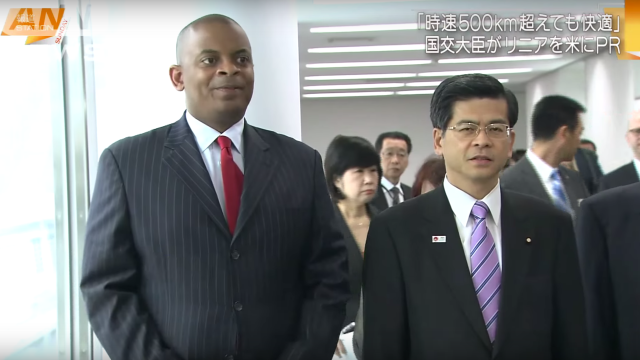This weekend, millions were approved in funding for a high-speed rail project linking Baltimore and Washington, DC by maglev train. A day later, the US Secretary of Transportation flew to Japan to see what riding one was like firsthand. These are two promising signs, my friends, for high-speed rail’s future in America — though there’s still a long way to go.
The US isn’t exactly known for its robust rail infrastructure, and it is known for being decades behind countries like Japan, China, France and Germany for developing high-speed rail (trains that go around 320km/h or more). But now the Baltimore Sun reported on Saturday that the federal government is giving Maryland $US27.8 million in funding to investigate a possible maglev train route between Baltimore and Washington, DC, which can be used to pay for engineering and planning. They’re the very first US federal funds for the project.
Meanwhile, the Wall Street Journal reported yesterday that US Transportation Secretary Anthony Foxx became the latest American government official to ride Japan’s maglev train and experience its record-breaking speeds. Secretary Foxx’s ride, which followed Maryland’s grant approval, lasted 25 minutes and saw speeds of 505km/h.
Sounds great, but let’s reel it back in to reality for a sec: That $US30 million in seed money is small potatoes. The Washington Post reports that the total cost of the 64km maglev link could be up to a dizzying $US10 billion. And Secretary Foxx’s journey could just be a diplomatic one, rather than something really reading into. (For what it’s worth, though, Maryland Governor Larry Hogan is also one of the few American officials who’ve ridden the train as well, which ain’t a coincidence.)
Earlier this year, on a diplomatic visit of his own, Japanese Prime Minster Shinzo Abe pitched Japanese maglev to President Obama. Prime Minster Abe has even once said that the Japanese government might foot half the bill for the DC-area project.
Japan broke train speed records with its maglev train in a test this spring at over 579km/h. (The train won’t start carrying passengers until 2027.) Maglev trains are faster than normal high-speed trains because friction is decreased: Wheels are replaced with superconductive magnets in the train and tracks that allow the vehicle to “float” as it’s being pulled along the rails with magnetic forces at high speeds.
At at any rate, these two events are more promising than not. We can only hope that as the adoption of maglev trains becomes more widespread, they will eventually make their way to Australia. Maglev here could still be years away… but it could be approaching faster than we think.
[Baltimore Sun and the Wall Street Journal]
Top image via ANNnewsCH YouTube
